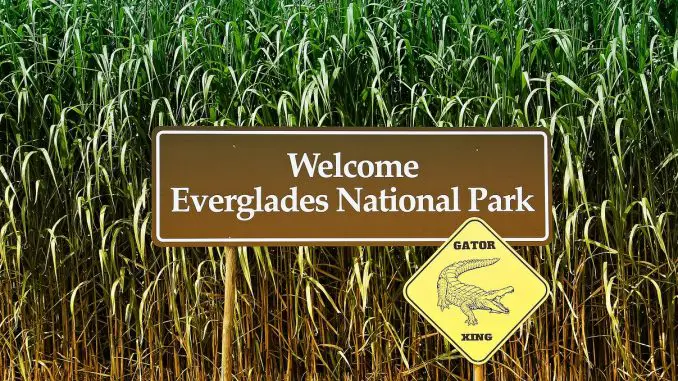
The unique Everglades wetland in southern Florida is extremely sensitive to climate change and therefore shows what awaits the world. Now the area is threatened by rising sea levels.
White-lit herons emerge from the waist-high half-grass. From the flat landscape stand single bare trees and here and there were larger trees.
The ground is covered with sawdust – spiny shrubs that easily tear exposed skin bloody. When you look at the horizon it looks like a vast prairie, but the light is deceiving. If you look down, you do not see land without water.
It roars from the propeller in the aft of the airboat and we blow forward. An alligator splashes into its sun spot on some grass stumps and disappears into the meter-deep water. Many people believe that the vast wetland of the Everglades is a vast swamp. It is not. It is a river that goes by the name “The river of grass”.
By the time Europeans arrived on Florida’s coasts, urinals had populated the peninsula for 12,000 years. But it was not until the Seminole people lost the war of the same name during the early 19th century that the river became inhabited. About 200 people fled from the invaders’ influence and settled deep into the inaccessible wetlands.
“My grandmother lived on that island until a few decades ago,” Alex Tigertail shouts over the engine sound and points.
Peace with the white man
He wears a bright red hoodie and drives our airboat through the vegetation to one of the so-called tree islands in the area. He belongs to the miccosukee people formed by a group that broke out of the Seminole people. He gestures towards the little island we will soon embark on. Some bridges border one of its sides and a wooden deck is built for tourists. The grandmother’s house was of timber with thatched roof. Out here, they could live in peace from the white man, says Alex Tigertail.
But it didn’t last forever. More and more people moved to Florida during the early 1900s and in 1923, road 41, now known as the “Alligator Alley”, was built through the Everglades.
– The road stopped the flow of water and this island began to flood. My grandmother moved shortly thereafter, says Alex Tigertail.
Agriculture, industries and property construction have used the area’s water, taken land from the area itself, polluted and disturbed. All of western Miami is built on what used to be the Everglades. Constructed canals and roads have led to the flow of water. The North Florida sugar industry is accused of being behind eutrophication of the waters in the area.
– I’ve seen a completely different flora slowly starting to take over here. A lot because the water contains so much more nutrition now, spills coming from the industries, farms and not least the sugar industry, says Jesse Kennon, who has lived in the Everglades for over 40 years and runs the tour company Coopertown Airboats.
Rising sea levels
Already in the middle of the 20th century, legendary activist Marjorie Stoneman Douglas said: “Everglades is a test. If we can do that, maybe we can keep the rest of the planet. ”
Leave a Reply